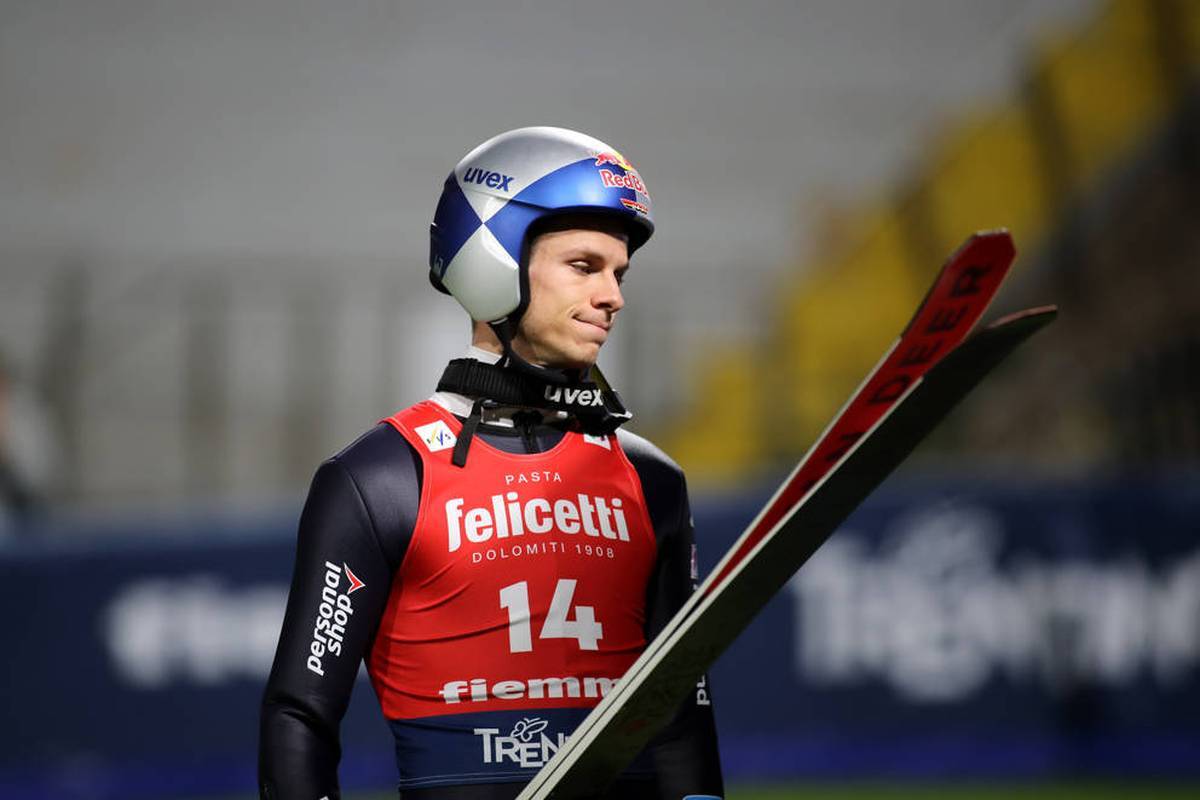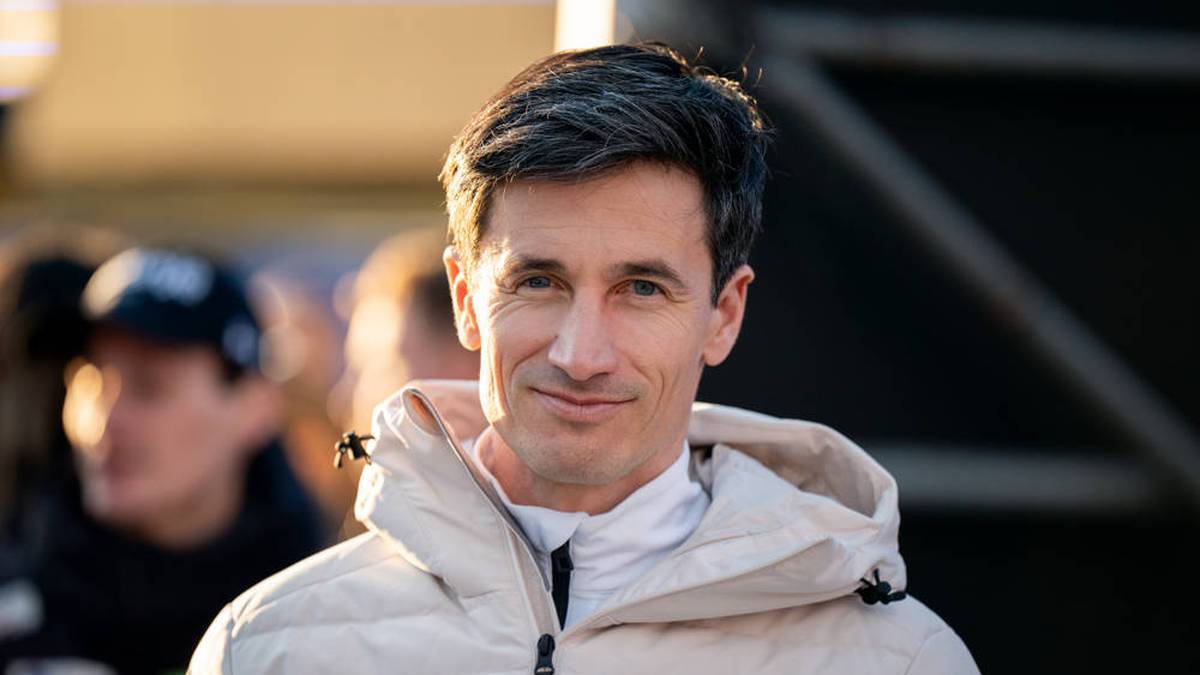
The cruciate ligament injuries by Alexandria Loutittt and Eva Pinkelnig at the Olympic general rehearsal cause heated debates. The German ski jumping legend Martin Schmitt demands a drastic step.
After the heavy falls at the Olympic General rehearsal in Val di Fiemme, the security debate in ski jumping will be managed more intensely these days. The focus is particularly on the material and possible adjustments to the Olympic ski jumps.
However, the German ski jumping icon Martin Schmitt does not believe that this is enough to reduce the risk of serious knee injuries to an acceptable level.
Martin Schmitt critically looks at the telemark landing in ski jumping
There would be an “increased risk because the landing pressure and the flight curve and thus also the landlord” were high in the Olympic ski jumps “, but this was not the only reason for Eva Pinkelnig’s falls and Alexandria Loutittt. Both have torn the cruciate ligament and will miss the 2026 Olympic Games.
“The fact that it is typical of these falls that the injuries do not happen due to the fall, but the fall because of the injury. There is the first landing contact and the first contact immediately tears the cruciate ligament or gives up the knee,” said Schmitt in the podcast “The flight show”.
Legend Schmitt sees telemar clanding as a problem
According to the two-time World Cup overall cland, a large risk factor is a complex problem. “It is a complex problem. The characteristics in ski jumping with telemar clanding is a very unnatural and unfavorable attitude to cushion a landing pressure, a maximum load,” said the 47-year-old.
The changes in the material have also contributed to the fact that the risk of landings has increased further. “Coupled with the material used, the athlete is forced into a position, the cruciate ligament injuries provoked. The knee bends inwards and that can almost be avoided,” he pointed out.
Too much strain in ski jumping?
Ski jumpers make around 600 jumps a year, which is accompanied by an enormous strain for the knees. According to Schmitt, the injuries may often also be the consequence of a variety of jumps and not just from the landing, in which the tape ultimately tears.
“In every training session there is a stress on the band structure. This can also lead to previous damage via the permanent burden, which can then lead to the band giving in in special situations,” he explained.
With the special situations he mentioned, he means, among other things, long flights, ski jumps with a high flight curve and tailwind conditions. All of these factors let the landing pressure rise.
“Is the Telemark still up to date?
Schmitt feels forced to ask himself very drastic questions. “Is the Telemark still up to date? What does it weigh higher? Tradition or the health of the athletes?”, The repeated world champion and Olympic champion in the team throws into the room.
“If you say that the health of the athletes has priority, you would actually have to do without this element.” The Telemark comes from another time when the Telemark could be “executed differently”. “With the modern material, which has made ski jumping much safer and more stable, you are forced into a position that is simply unhealthy. This inevitably leads to cruciate ligament injuries in extreme situations.
The focus here is on the curved binding rods, which make telemar clanding difficult, but offer advantages in the air. What Schmitt describes as a “security gain” of modern material has to do with the flight itself. In this way, dangerous falls, in which the athlete already loses control in the air, could be greatly reduced in recent years.
Schmitt speaks for a change of tightening
Schmitt still sees potential in the suits. According to him, larger suits would be useful in particular for women who, according to scientific studies, have a higher basic risk of cruciate ligament injuries, which increases with the higher travel speed.
“You will probably change the suit volume. You could go from plus four to six centimeters (scope between body and suit). So you have a little more buoyancy and get a little slower. That would be extremely helpful,” he argued.
Schmitt is also clear that this is not a groundbreaking factor. “The basic risk is simply extremely high due to the telemark landing. You can only try to reduce the risk a little, but you won’t get it away because you do not end up.
Rule changes are skeptical
In recent years, the FIS has not contributed to the landing that the landing becomes safer. So more points have been pulled off for a year when an athlete ends up without a telemark. This indirectly forces the athletes to set a telemark landing in border areas, so as not to lose the chance of winning.
A regulation introduced in 2013 that trainers for their jumpers are allowed to shorten the start and receive bonus points has also been changed so that the bonus points are only awarded if the athlete also reaches 95 percent of the Hillsize width. This often has the consequence that coaches prefer to do without the tactical trick with uncertain countries.
However, it should also be said that the Telemark presupposes a certain landing preparation that can reduce the risk again. So if you abolish this, athletes could be tempted to get out on bending and breaking the last half meters and then also get uncertainly to land. Ultimately, the risk always jumps.
The cruciate ligament injuries of Alexandria Loutite and Eva Pinkelnig at the Olympic Dress Rehearsal Are Causing Heated Debates. German Ski Jumping Legend Martin Schmitt is calling for a drastic step.
After the Serious Falls at the Olympic Dress Rehearsal in Val di Fiemme, The Safety Debate in Ski Jumping Is Once Again Being Conducted More Thesis Days. The Focus is Particularly on the Material and Possible Adjustments to the Olympic Hills.
However, German Ski Jumping Icon Martin Schmitt does not Believe that this alone is Enough to Reduce the Risk of Serious Knee Injuries to an Acceptable Level.

Martin Schmitt Sees The Telemark Landing in Ski Jumping Criticalally
Although there is an “increate risk at the Olympic Hills Because the landing pressure and the flight curve and there so the landing load are high,” This was not the only reason for the fall and alexandria loutite. Both Tore Their Cruciate Ligament and Will Miss the 2026 Olympic Games.
“What is typical of thesis is that the injuries do not happiness because of the fall, but the fall Because of the injury. There is the first landing contact and with the first contact the cruciate ligament test immediately or the knee gives way,” Schmitt Explained in the podcast “.
Legend Schmitt Sees Telemark Landing as a Problem
Accord to the Two-Time Overall World Cup Winner, A Major Risk Factor is the Telemark Landing. “It’s a complex problem. The characteristic in ski jumping with the telemark landing is a very unnatural and unfavorable position to cushion a landing pressure, a maximum load,” The 47-year-old pointed out.
The Changes in the Material Have Contribued to the fact that the risk during landings has increate Further. “Paired with the material used, the athlete is forced into a position that provokes cruciate ligament injuries. The knee Buckles inwards and that is almost impossible to avoid,” He pointed out.
Too Much Strain in Ski Jumping?
Ski jumpers make around 600 jumps a year, which is associated with enormous stress on the knees. According to Schmitt, The Injuries May Often So Be the Consquence of a Large Number of Jumps and Not Just From The Landing, Where The Ligament Ultimately Tears.
“In every training session, there is stress on the ligament Structure. Over time, this constant stress can also lead to pre-existing damage, which can then that lead to the ligament giving way in special situation,” he explained.
By the special situation he mentioned, he meeans, Among other things, long flights, Hills with a high flight curve and tailwind conditions. All thesis factors increate the landing pressure.
“Is the Telemark Still up to date?
Schmitt FEES COMPELDED TO ASK DERY Drastic Questions. “Is the Telemark Still Up to Date? What Weighs More? Tradition or the Health of the athletes?” The Multiple World Champion and Olympic Team Champion Throws Into the Room.
“If you say that the health of the athletes Takes Precedence, you would actual have to do without this element.” The Telemark Comes from a Different Time, when you Could Still “Perform the Telemark Differently.” “With the Modern Material, which Has so made ski jumping much Safer and more stable, you are forced into a position that is simply unhealthy. This inevitly leads to cruciate ligament injuries in extreme situations,” He explained.
The FOCUS here is on the curved binding rods, which make the telemark landing more difficult, but offer advantated in the air. What Schmitt Descrbebe as a “Safety Gain” of the Modern Material has to do in Particular with the Flight Itself. In This Way, Dangerous Falls, in which the athlete Loses Control in the Air, Have Been Greatly Reduced in Recent Years.
Schmitt Speaks Out in Favor of Suit Changes
Schmitt Still See’s potential in the Suits. In Particular for Women, Who, According to Scientific Studies, Have a Higher Basic Risk of Cruciate Ligament Injuries, which Increases with the Higher Approach Speed, Larger Suits would be sensible in his Opinion.
“You will, Proplably the Suit Volume. You Could Go from Plus Four To Plus Six Centimeters (Clearance Between Body and Suit). This Gives You A Little More Lift Surface and You Come to the Little Slower. That would be enormously helspf.
However, Schmitt is therefore aware that this is not a groundbreaking factor. “The Basic Risk is Simply Extremely High Due to the Telemark Landing. You can only to reduce the risk a little, but you won’t get Rid of It Completely. You Don’t land axialy. Why the Telemark wants always be the basic problem and you Won’t be ABLE to PREVENT Cruciate Ligament Injuries, “He Concluded.
Rule Changes Make Skeptical
In Recent Years, The Fis Has not Contributed to Making Landing Safer with some Rule Changes. For example, for a year now, even more points have be deducted if an athlete lands with without telemark. This indirectly forces athletes to use a telemark landing even in borderline areas in order not to joopardize their chances of Winning.
A regulation introduced in 2013, that coaches May Shorten the Run-up for their jumpers and receives bonus points for this, has been changed in search a way that bonus points are only the athlete 95 percent of the hill size. This Often has the consequence that coaches prefer to forgo the tactical trick with uncertain landings.
However, it should therefore be said that the telemark Requires a certain landing preparation, which can reduce the risk again. If you abolish This, athletes could be temted to get the last half meter out by hook or by croook and then so come to the landing unsafely. Ultimately, The Risk Always Jumps Along.